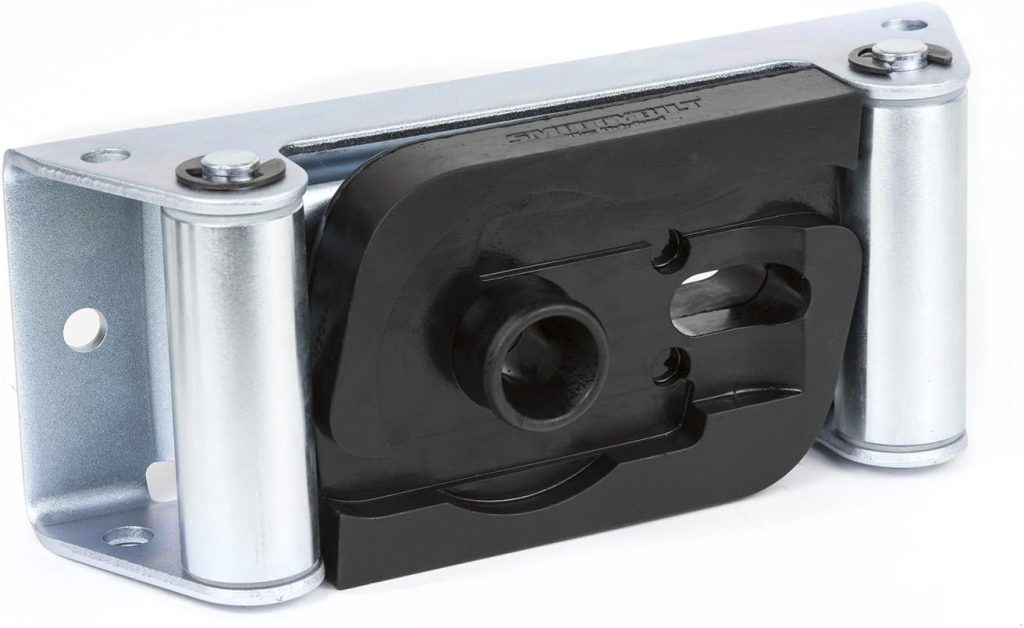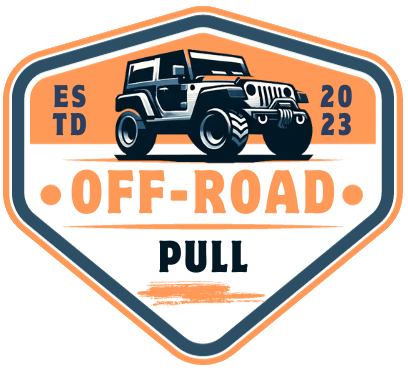One crucial component that plays a vital role in ensuring secure load handling is the winch hook isolator.
This essential device is designed to prevent accidental disengagement of the load from the hook, thereby minimizing the risk of accidents and ensuring smooth, reliable hoisting.
Winch hook isolators are crucial off-road accessories, ensuring that hooks stay securely fastened while handling dynamic loads.
What is a Winch Hook Isolator?

A winch hook isolator is a safety device designed to lock the winch hook in place, preventing accidental load disengagement. It acts as a barrier that keeps the hook secure, making lifting and rigging safer during off-road and industrial operations.
This device ensures that the load doesn’t accidentally detach during lifting or rigging tasks by locking the hook in a fixed position.
Winch hook isolators are commonly constructed from robust materials such as steel or other durable alloys, providing the necessary strength and resilience for various lifting applications.
How Does a Winch Hook Isolator Work?
A winch hook isolator is a device that ensures the hook remains securely fastened, preventing accidental load disengagement.
Locking Mechanism: The isolator features a locking mechanism that engages with the hook. This mechanism varies depending on the design and type of isolator.
Spring-Loaded Isolators: In this type, a spring applies pressure to the hook, holding it in place. The spring-loaded mechanism engages automatically when the hook is not in use, ensuring it stays secure.
This type of isolator is useful for dynamic lifting tasks, where frequent adjustments may be necessary. The spring ensures that the hook doesn’t disengage accidentally, providing continuous security.
Gravity-Activated Isolators: These isolators utilize gravitational force to lock the hook. They typically feature a weighted component that naturally falls into place when the hook is not in use, securing it.
This design is particularly useful for less dynamic lifting tasks, where the hook may remain stationary for extended periods.
Seamless Engagement: Both types of isolators are designed to engage seamlessly with the hook, forming a secure connection. This engagement prevents accidental release, minimizing the risk of accidents and making lifting tasks safer.
Durability: The isolator is constructed from robust materials such as steel or other alloys, which ensure its durability and longevity. These materials can withstand the pressures and strains of various lifting tasks, ensuring reliable performance.
Types of Winch Hook Isolators:
Winch hook isolators come in various forms, each designed to suit specific applications and provide unique benefits.
There are two main types of winch hook isolators: spring-loaded isolators and gravity-activated isolators. Each type enhances load security in different rigging scenarios.
Let’s explore the details of the main types:
Spring-loaded Isolators: These isolators use a spring mechanism to engage the hook and keep it securely in place. The spring creates tension, locking the hook immediately after the load is released. This type of isolator is particularly useful for dynamic lifting tasks where frequent adjustments are needed, such as in construction and manufacturing.
The spring mechanism ensures that the hook stays secure even during movement, preventing accidental release and ensuring smooth operation.
Gravity-activated Isolators: These isolators rely on gravitational force to lock the hook. They feature a weighted component that falls into place when the hook is not in use, securing it. This design is beneficial for stationary or less dynamic lifting tasks, providing secure engagement without the need for additional mechanisms.
Gravity-activated isolators are often used in industries like maritime, where the lifting tasks may not require frequent adjustments, and a secure, straightforward locking mechanism is sufficient.
Also check: Best winch hook isolators
Advantages and Use Cases:
Spring-loaded Isolators: Their ability to engage immediately makes them ideal for dynamic tasks, such as construction and manufacturing, where the hook may need to be engaged or disengaged frequently.
This prevents accidental load disengagement and allows for efficient, uninterrupted operation.
Gravity-activated Isolators: These are suitable for stationary or slower-paced lifting tasks, like those in the maritime industry, where secure engagement is essential without the need for constant adjustments.
Installation and Maintenance:
Proper installation and maintenance of winch hook isolators are crucial for safe and effective lifting operations. Here’s a detailed explanation of these aspects:
Installation:
Compatibility: Before installing a winch hook isolator, ensure it is compatible with the hook and other equipment. The isolator should match the hook’s design and size, allowing for seamless engagement and secure fastening.
Compatibility checks are necessary to prevent any issues that might lead to accidental load disengagement.
Secure Fastening: Once compatibility is confirmed, securely fasten the isolator to the hook. This involves aligning the isolator correctly with the hook and engaging any locking mechanisms. The fastening process varies depending on the type of isolator.
For instance, a spring-loaded isolator may require tightening to create sufficient tension, while a gravity-activated isolator may need alignment to ensure the weighted component falls into place.
Test Functionality: After installation, test the isolator’s functionality by lifting and lowering a load, ensuring it remains securely fastened throughout.
This test helps verify that the isolator is working as intended, providing the necessary security for the lifting operation.
Maintenance:
Regular Inspections: Periodic inspections are essential to check for wear and tear. Look for signs of rust, corrosion, or damage that might impair the isolator’s performance. These inspections should cover both the isolator’s mechanical components and its overall structural integrity.
Replacement: If any damage or wear is detected during inspections, replace the isolator promptly. Continuing to use a damaged isolator can compromise safety, leading to potential accidents. Regular replacement of worn isolators ensures smooth and secure lifting operations.
Lubrication: Some types of isolators, particularly spring-loaded ones, may require lubrication to maintain smooth operation. Ensure that any lubrication is compatible with the isolator’s materials, avoiding substances that could cause corrosion or deterioration.
Safety Considerations:
Follow Safety Guidelines: Always adhere to industry safety guidelines and standards during installation and maintenance. This includes wearing appropriate protective equipment, following procedures for testing and inspection, and ensuring all components are in proper working order.
Training: Operators should be trained in proper installation and maintenance practices, reducing the risk of accidents and ensuring safe lifting operations. Training also helps workers identify potential issues during inspections, allowing for timely corrective action.
Also check: how to wire a winch isolator switch
FAQs
What is a winch hook isolator used for?
A winch hook isolator is used to lock the winch hook securely, preventing accidental load disengagement during towing, rigging, and off-road recovery.
Why is a winch hook isolator important for off-road recovery?
A winch hook isolator is important for off-road recovery because it prevents the hook from bouncing around or disengaging accidentally during rugged terrain driving. This enhances safety and protects both the vehicle and the winch cable.
What materials are winch hook isolators made from?
Winch hook isolators are typically made from durable materials like steel, aluminum, or reinforced polymers. These materials provide the strength and resilience needed to handle heavy loads and rough conditions.
How do I choose the right winch hook isolator for my vehicle?
To choose the right winch hook isolator, ensure compatibility with your winch hook size and type. Also, consider the material and the type of isolator (spring-loaded or gravity-activated) based on your intended use, such as dynamic off-road recovery or stationary lifting tasks.
Can a winch hook isolator be used with any type of winch?
Most winch hook isolators are designed to be compatible with standard winch hooks. However, it’s essential to check the specifications of your winch and hook to ensure a proper fit and secure operation.
How does a spring-loaded winch hook isolator work?
A spring-loaded winch hook isolator uses a spring mechanism to apply constant tension, keeping the hook securely in place when not in use.
Conclusion:
Winch hook isolators play a vital role in ensuring safe and efficient lifting operations. By preventing accidental load disengagement, they minimize the risk of accidents and operational failures.
It’s crucial to prioritize safety by choosing quality isolators, adhering to maintenance practices, and complying with industry standards, ensuring smooth, safe, and reliable lifting operations.

